

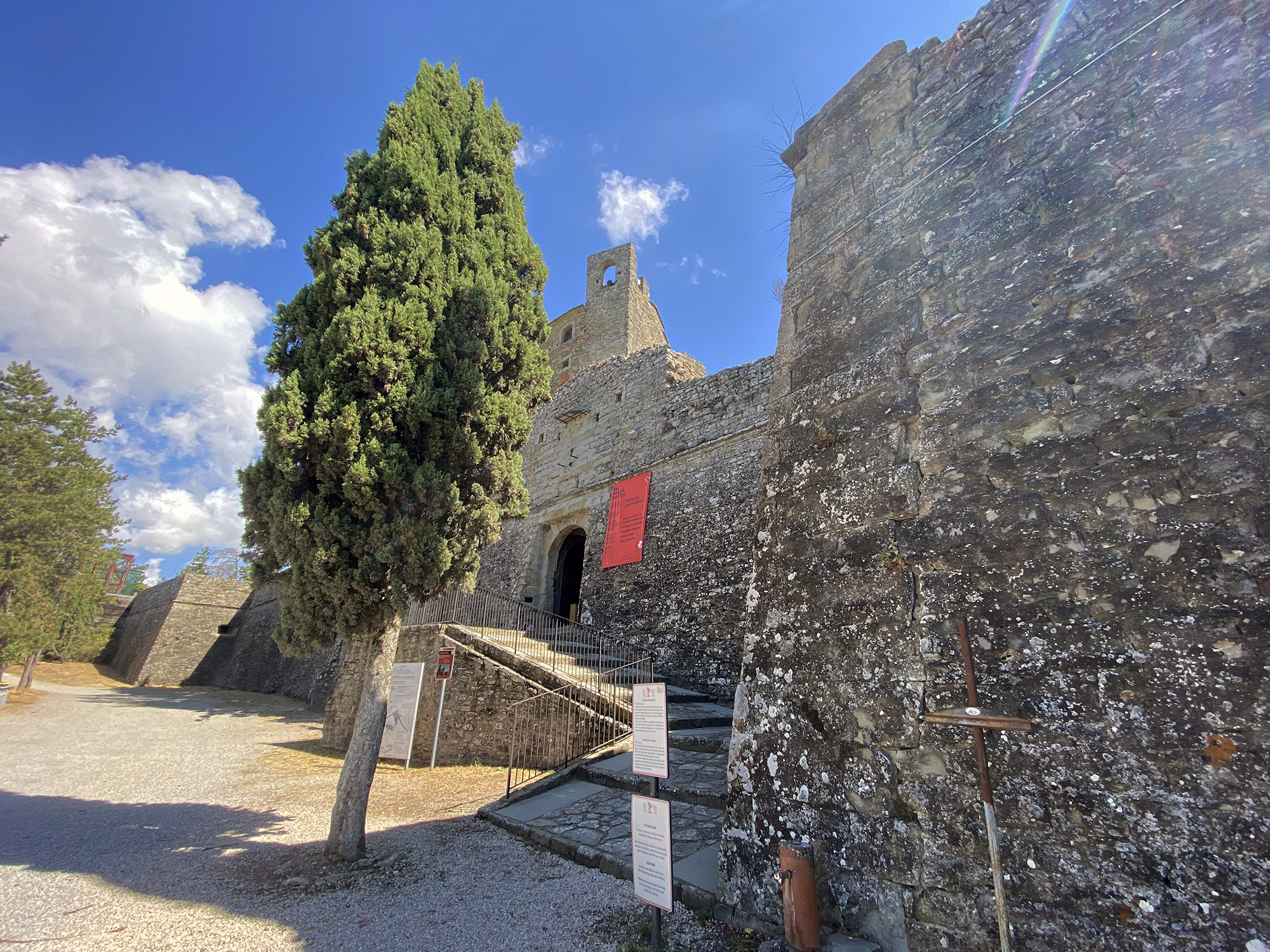
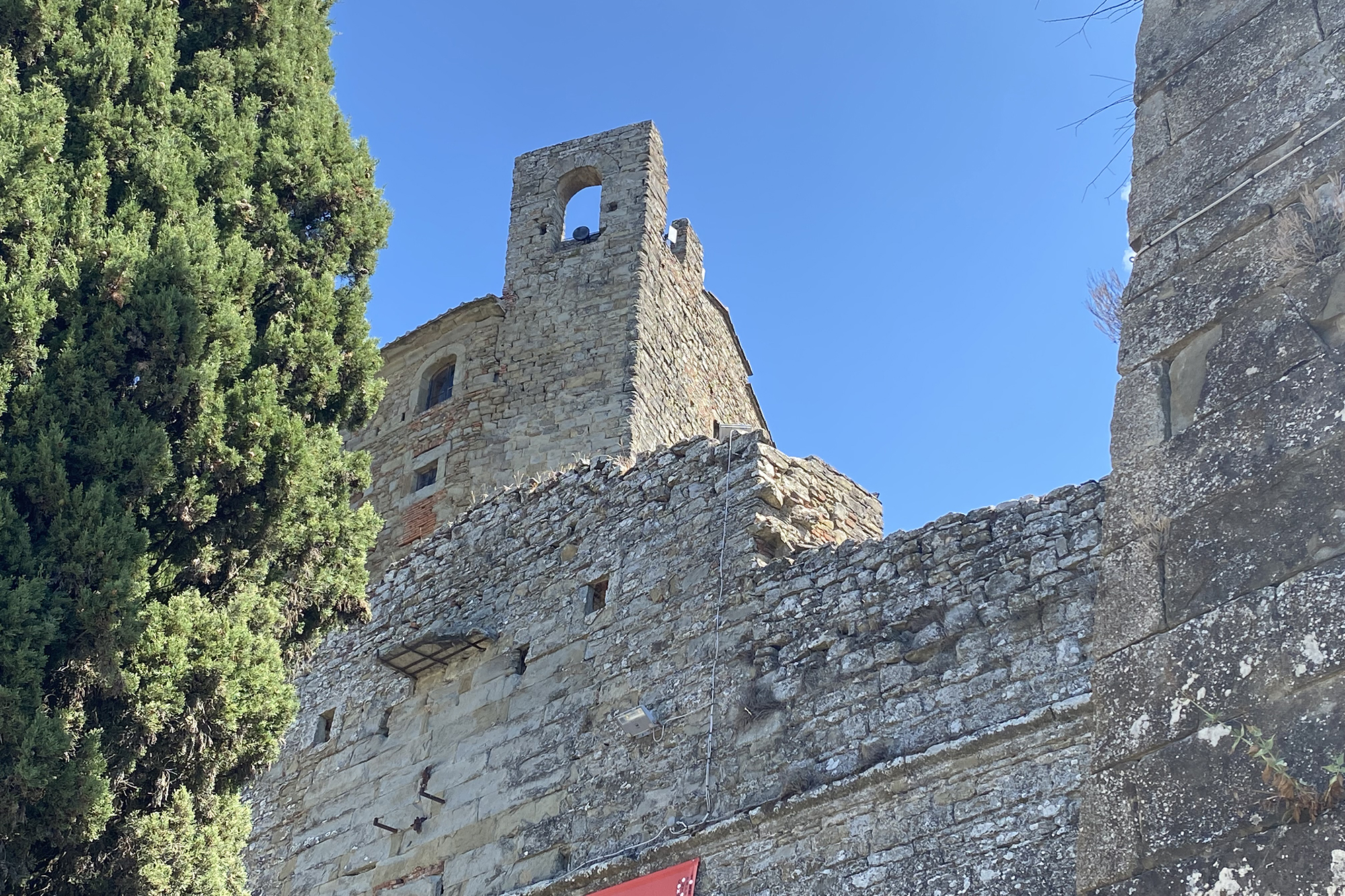
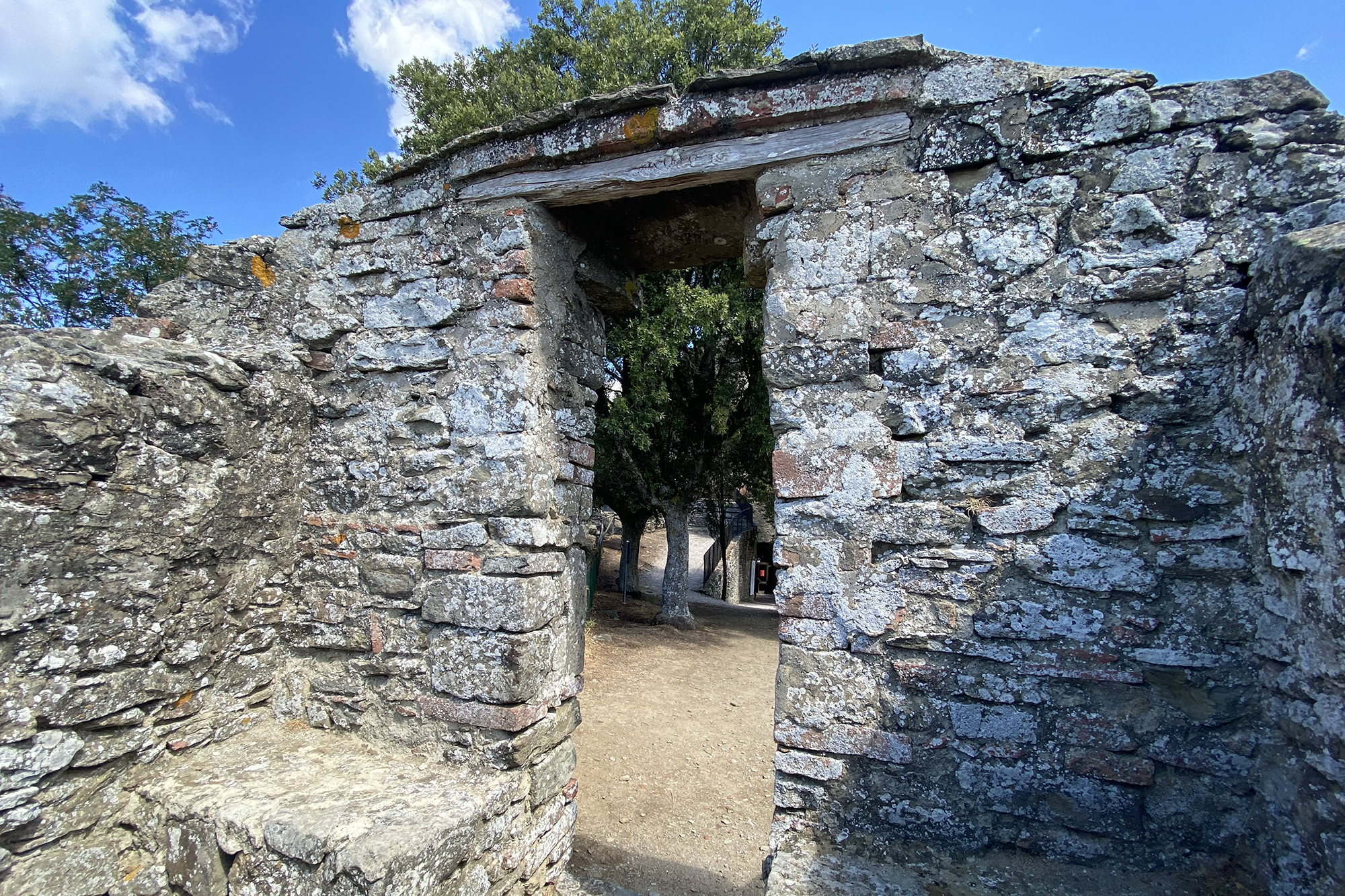
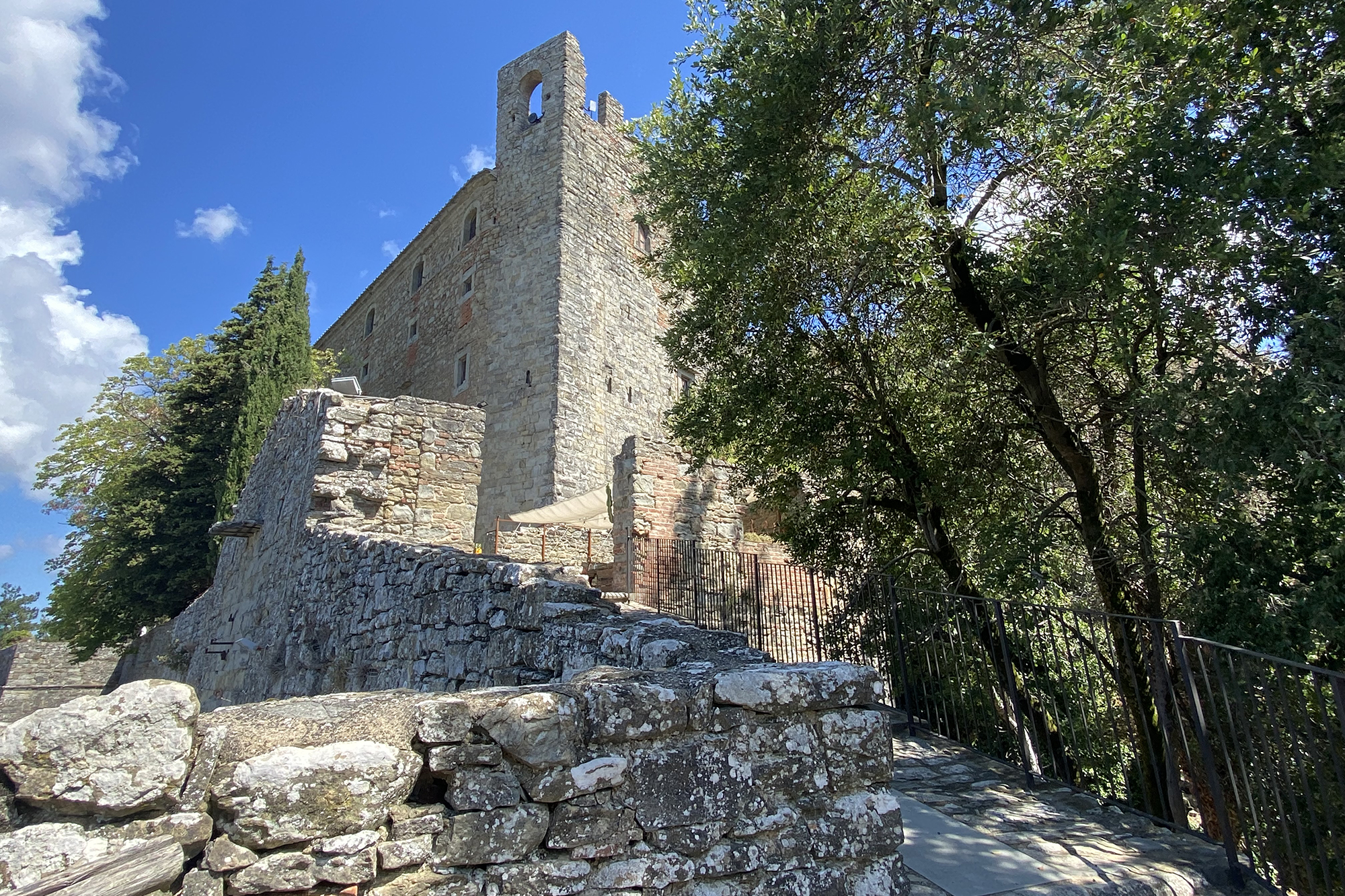
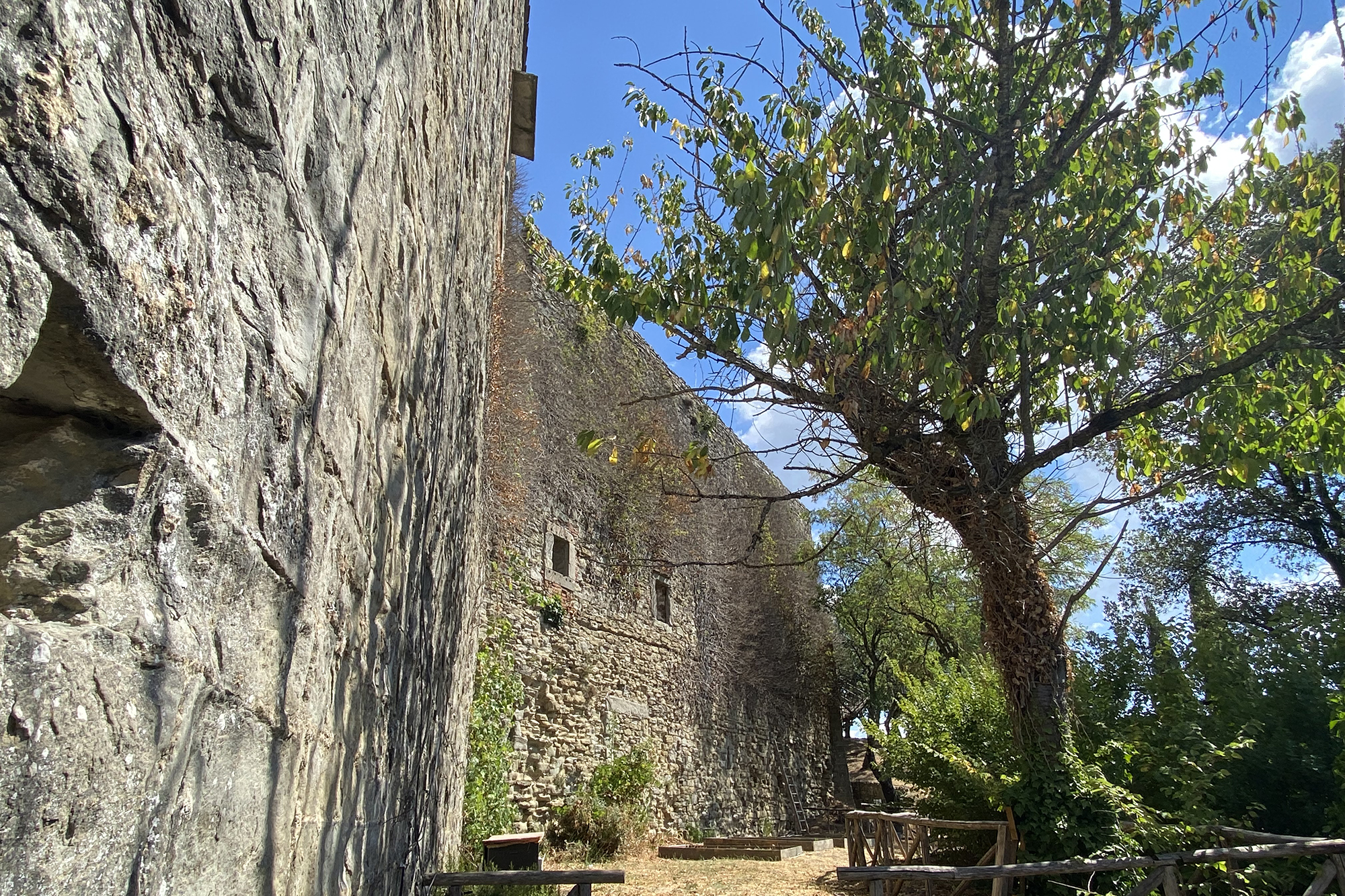
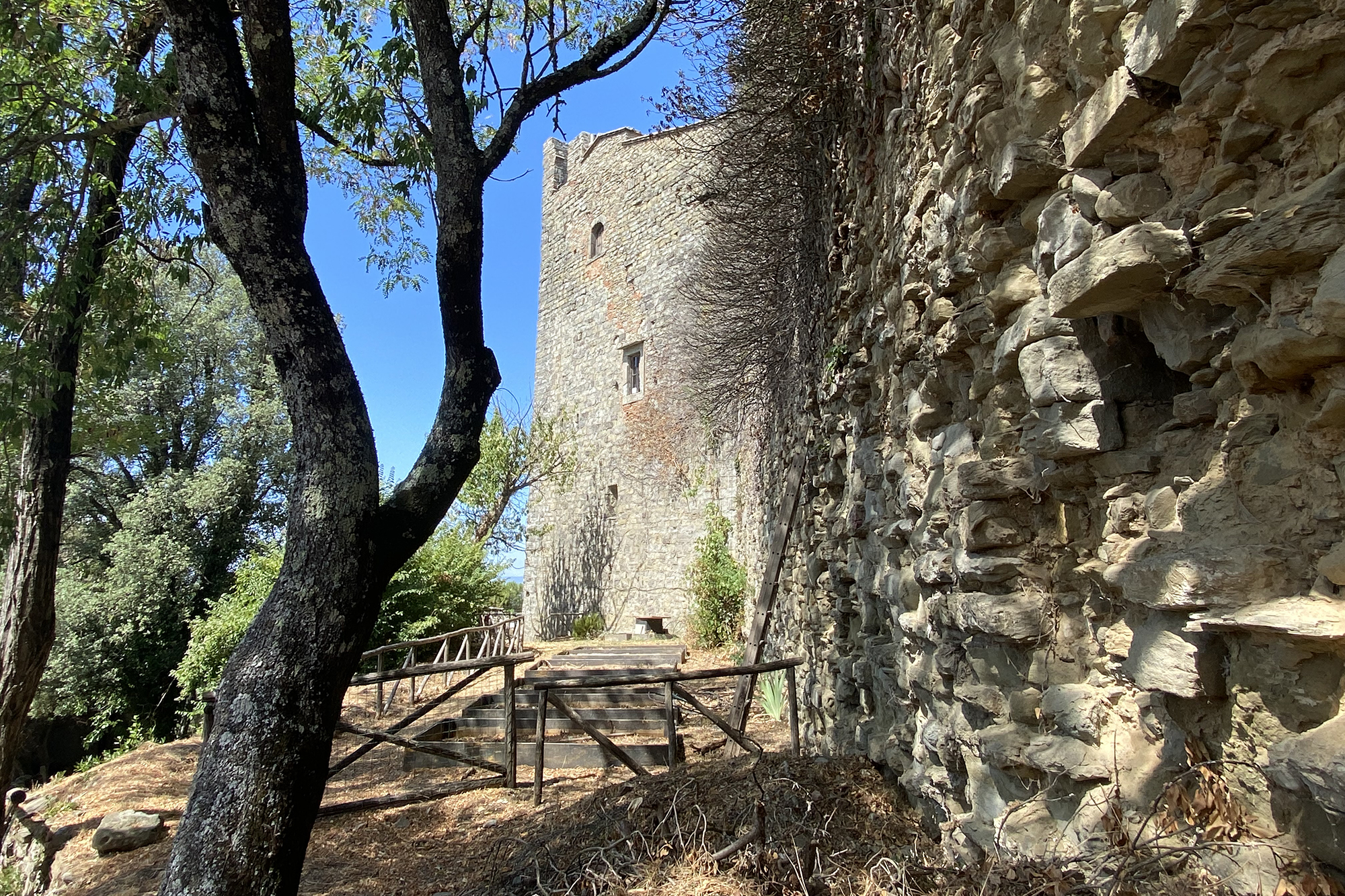

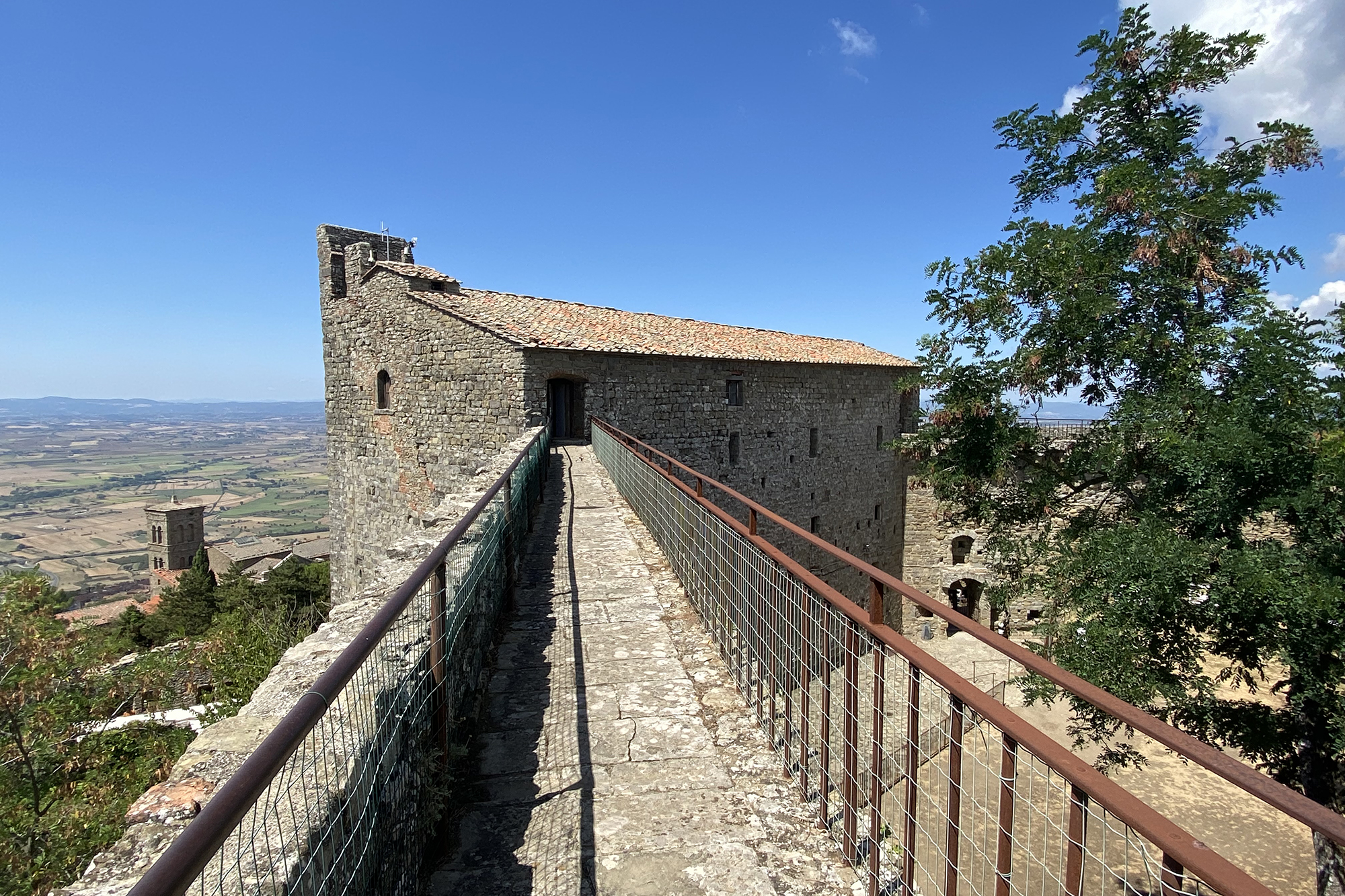
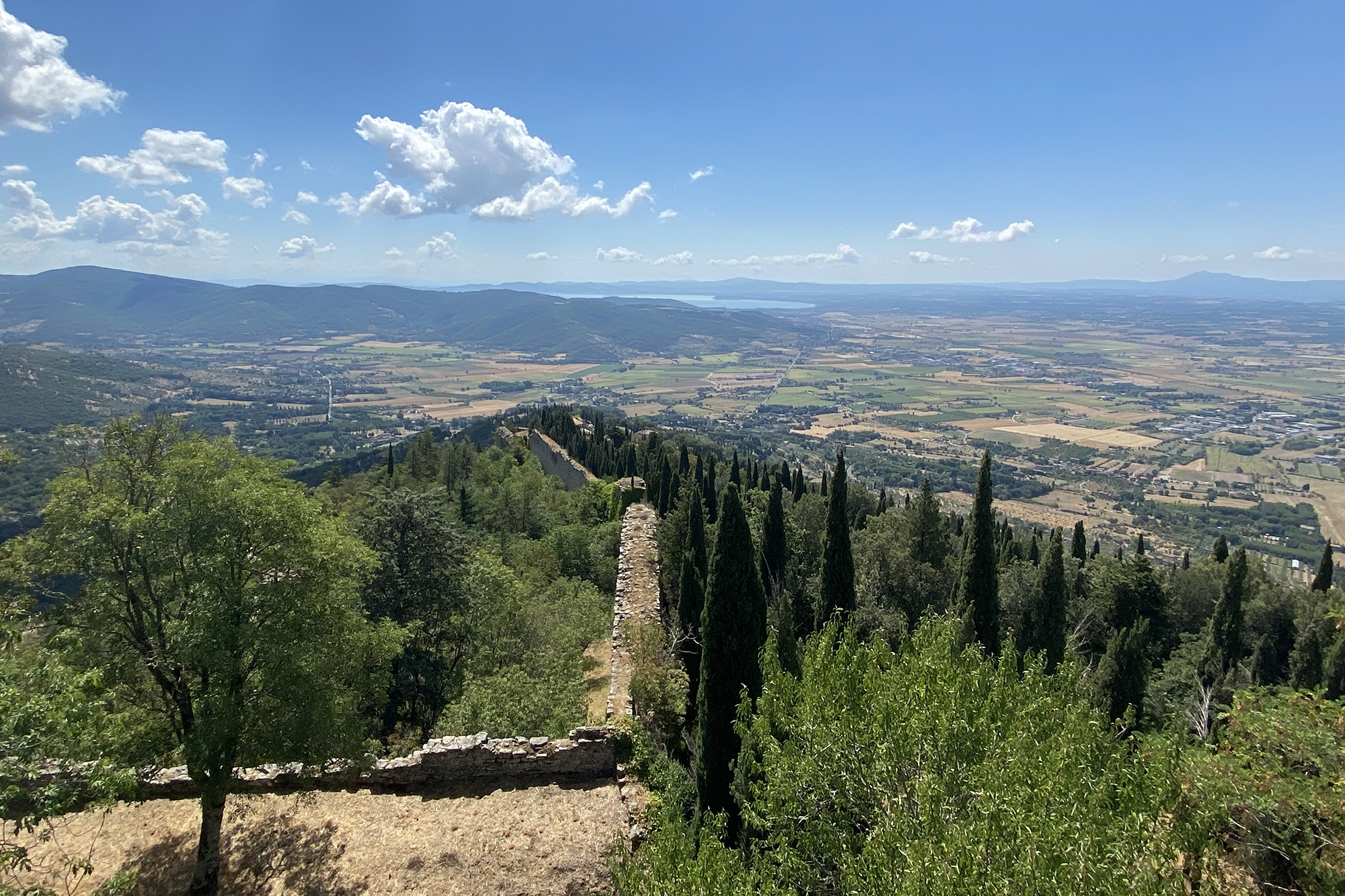

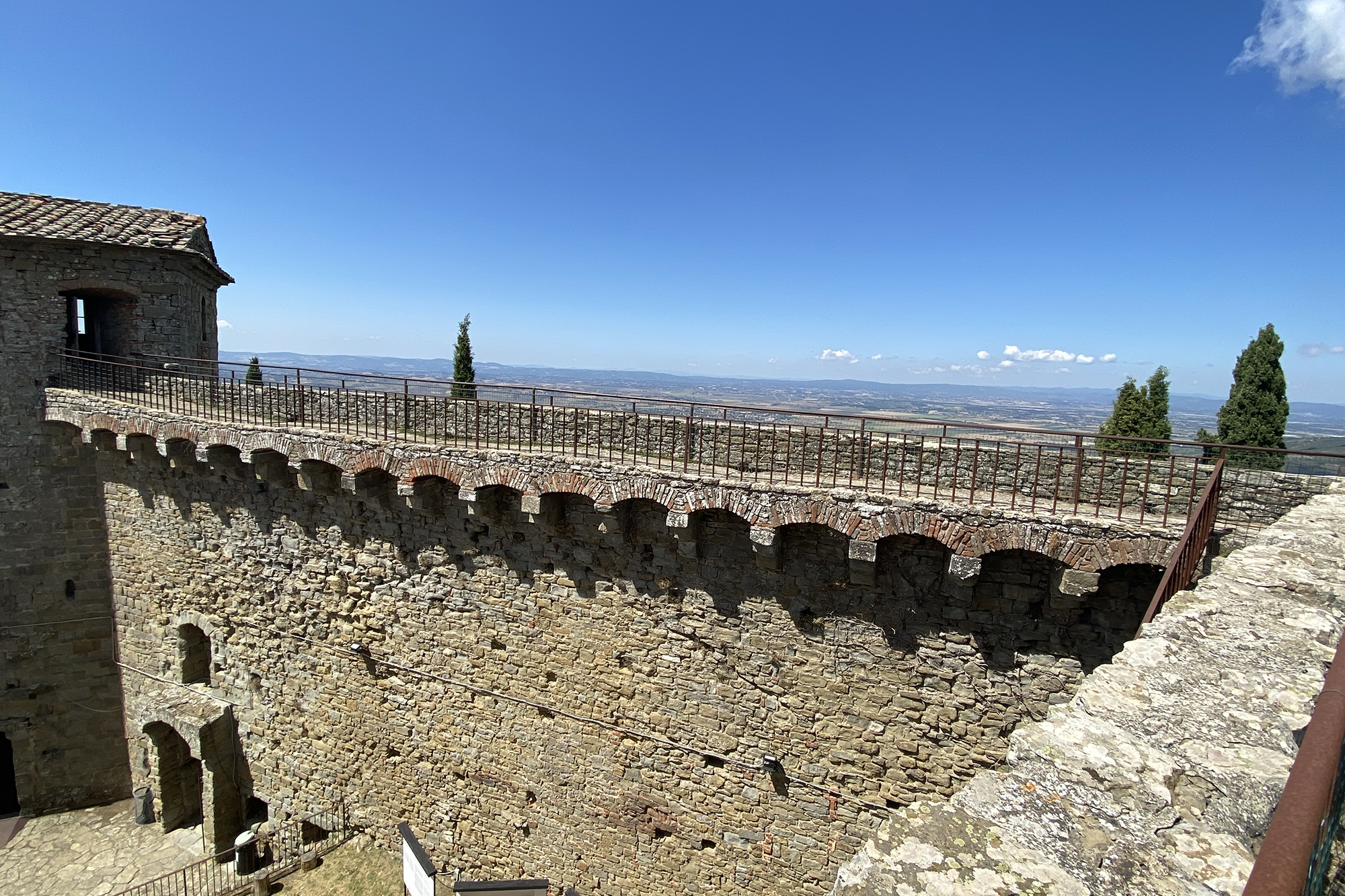
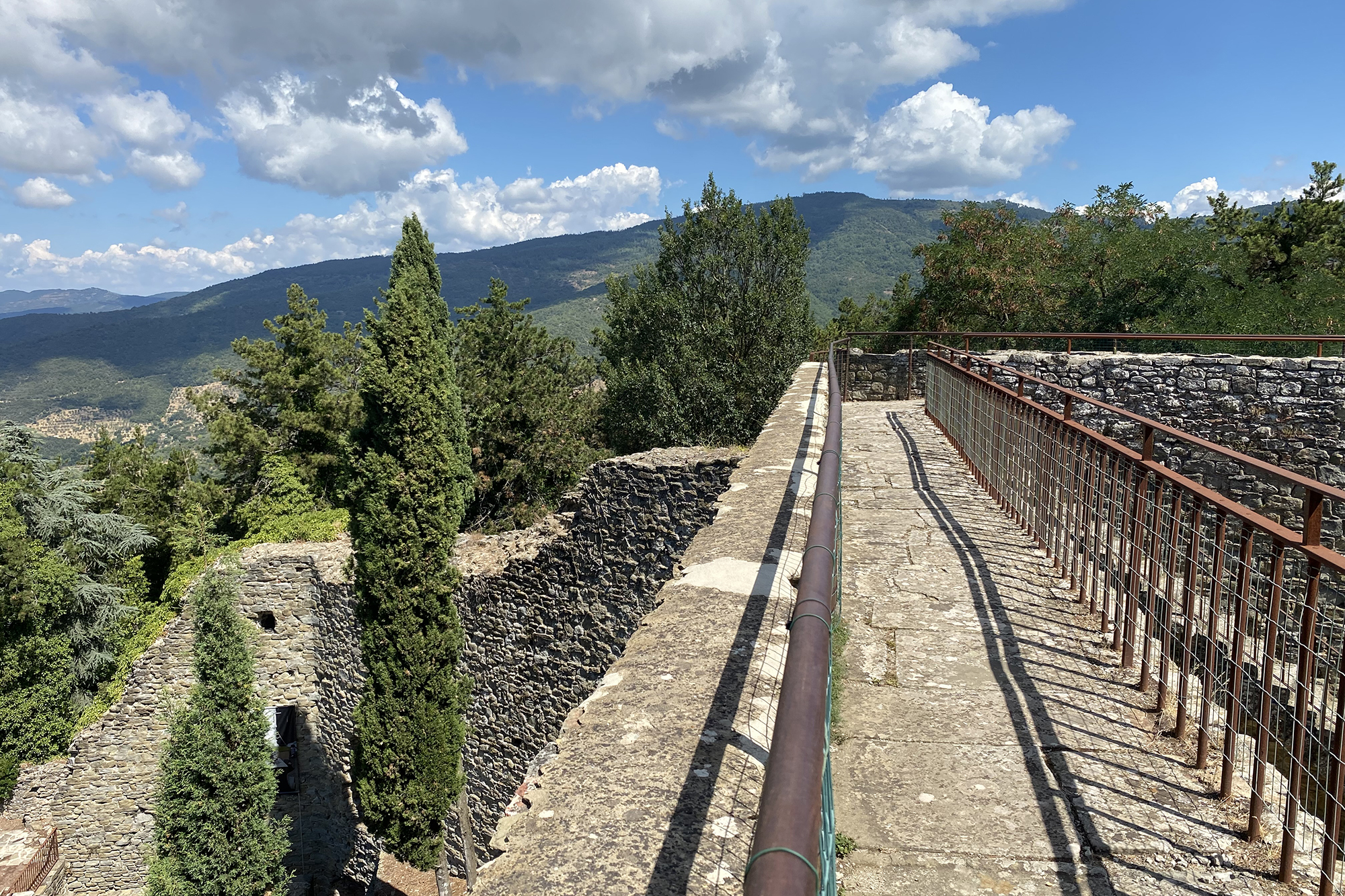
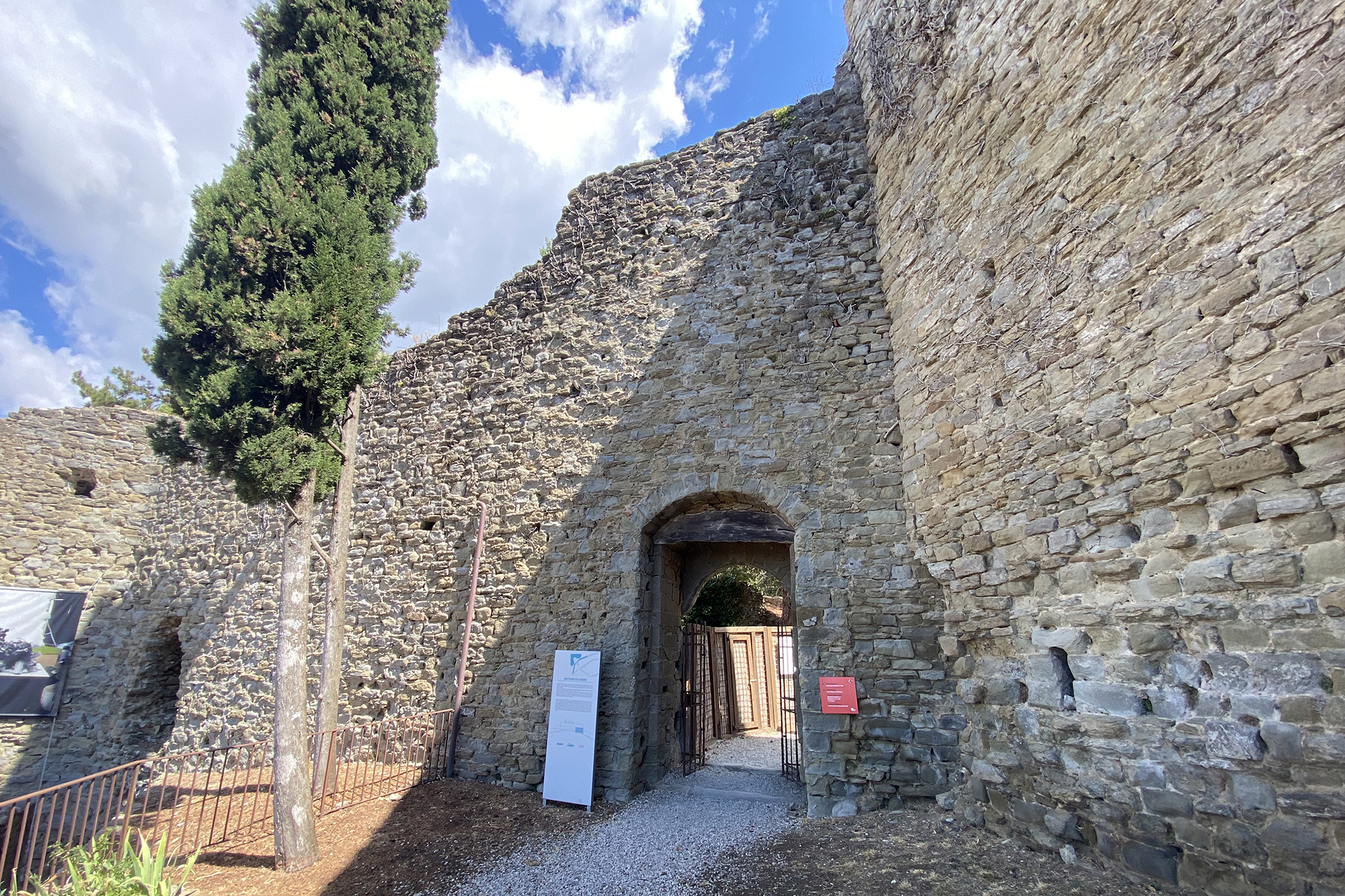
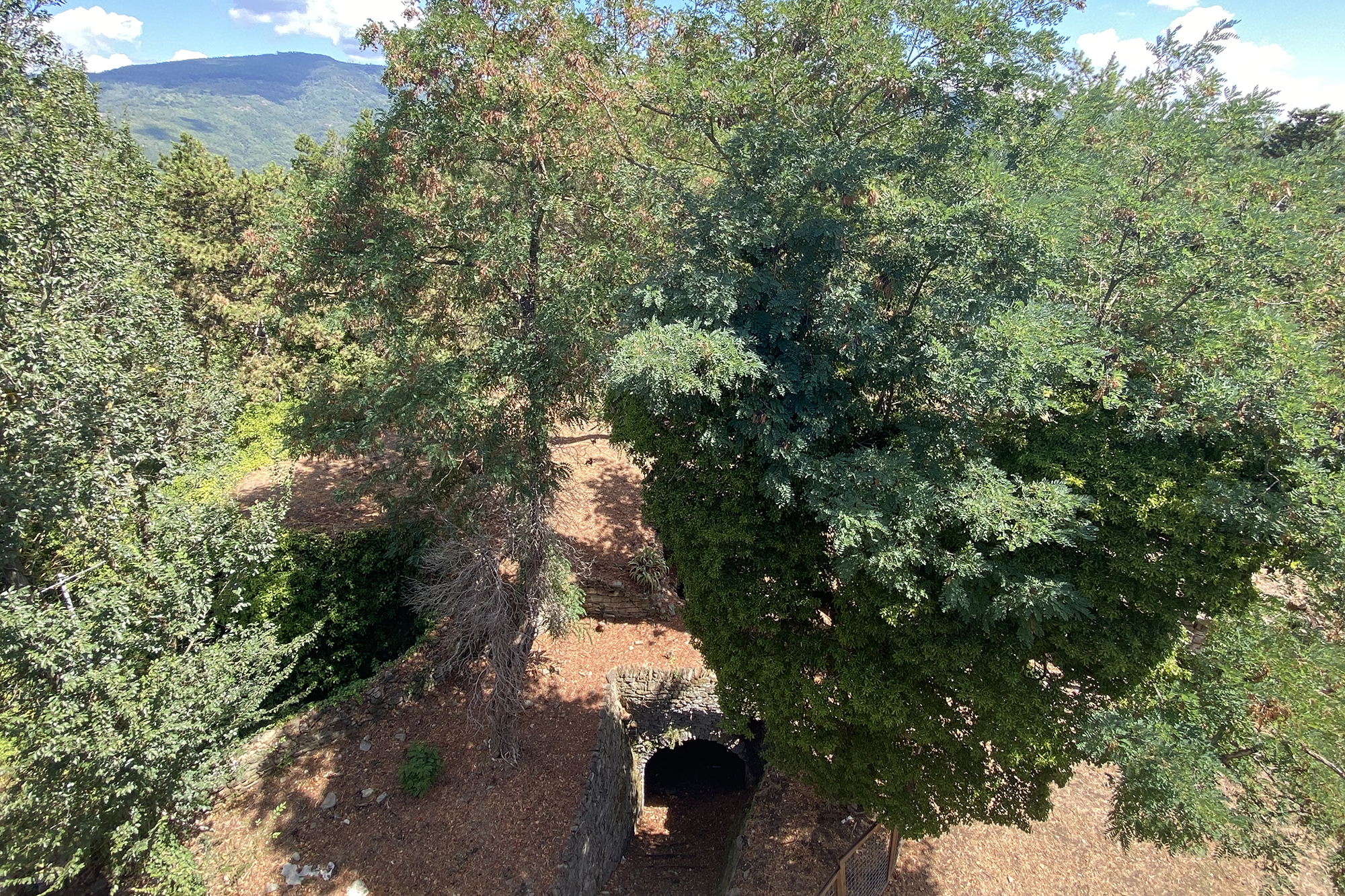
















How to reach
The Fortress dominates the town of Cortona, province of Arezzo. Situated on the border between Tuscany and Umbria, in a hilly position 600 metres above sea level, it can be easily reached by car, either from the north or the south, by exiting the Autostrada del Sole (A1) at the Valdichiana tollgate. Immediately after the exit take the E45 (Siena-Perugia) in the direction of Perugia and exit for Cortona (Cortona San Lorenzo). From here simply follow the signs to the SS71 until Camucia and continue towards the centre of town.
History
The Girifalco (or Medicean) Fortress was used in the early medieval period by Gothic and Longobard garrisons; although an ancient fortification of Etruscan origin probably stood on the site, the first documentation dates back to 1258, when it was sold to Arezzo. After 1266, several renovations were carried out, which continued later in the 14th century under the rule of the Casali family. It was then the Sienese who helped Cortona in the reconstruction of both the walls and the fortress, shortly before the town came under the rule of Florence (1411). The Palazzo del Capitano, or Mastio, which served as the keystone of the walled circuit of the town, dates back to this period. This is the oldest part of the fortress; its façade facing the courtyard is the only remnant of the medieval fortress.
In 1540, Cosimo I de' Medici (known as Cosimo the Elder) visited almost all the fortresses in Tuscany to determine which ones should be strengthened and modernized based on their particular strategic location; as recorded in an official document of the time, among those visited was the fortress of Cortona, which was then completely renovated. In 1556, work began at the charge of the people of Cortona, who at that time were raising the price of salt, wheat, must, the taxes on grapes, etc.
Cortona was indeed of considerable strategic importance to Florence, especially at the time of the war against Siena (1550–1555), and was also situated on the border with the Papal States. Restructuring of the fortress also affected the walls and gates of the town: the towers that stood on the walled circuit at regular intervals were pulled down, some gates were closed, and the outer boroughs were demolished. Unfortunately, immediately after these interventions, the decline of the fortress began, perhaps in relation to its uselessness, since from the war against Siena onwards, Tuscany enjoyed two centuries of uninterrupted peace.
The Fortress later took on the role of the seat of a small garrison with the function of 'urban police'. Its current appearance is the result of 16th-century renovations: imposing walls follow a trapezoidal layout with four corner bastions of different shapes and sizes. Each of them had its own name: the one to the south was called S. Margherita (the patron saint of the town of Cortona; in fact, the Fortezza is located near the church of S. Margherita), close to the entrance, where the guardhouse was situated; the others were S. Maria Nuova (another church of Cortona) to the west, S. Egidio (the highest mountain of Cortona) to the north, and finally S. Giusto to the south. Inside were the powder magazine and prison (to the south), four cannon posts (to the west), two gun emplacements (to the north), and three fusiliers (to the east). The walls on the inside have an embankment that was useful at the time to cushion artillery shots, while each bastion has side embrasures on which cannon were placed to defend all sides of the structure.
The central body of the fortress is rather small in size, so it is thought that it could only have housed a small garrison, bearing in mind that several soldiers' barracks that stood along the sides of the courtyard have been demolished. Looking at the building from the outside, one can see that there are, on the façade facing the entrance, several brick additions and considerable remodelling: large windows replace much smaller older ones, demonstrating the different use of the building over time, which gradually assumed more and more 'civil' characteristics. The material used in the various epochs for its construction is very diverse; in fact, well-squared stones alternate with various materials. The oldest remaining parts are the inner façade and the eastern wall enclosing the inner courtyard to the north. Restorations in 1959 and 1969 made the donjon and courtyard accessible to visitors. The restoration of the bastion of Santa Maria Nuova was completed in 2010, with the addition of an external hoist to improve accessibility and allow for new uses.
More info & notes
Official Website » Fortezza del Girifalco